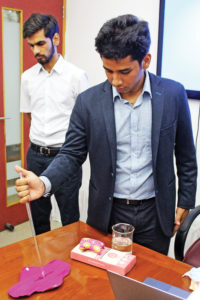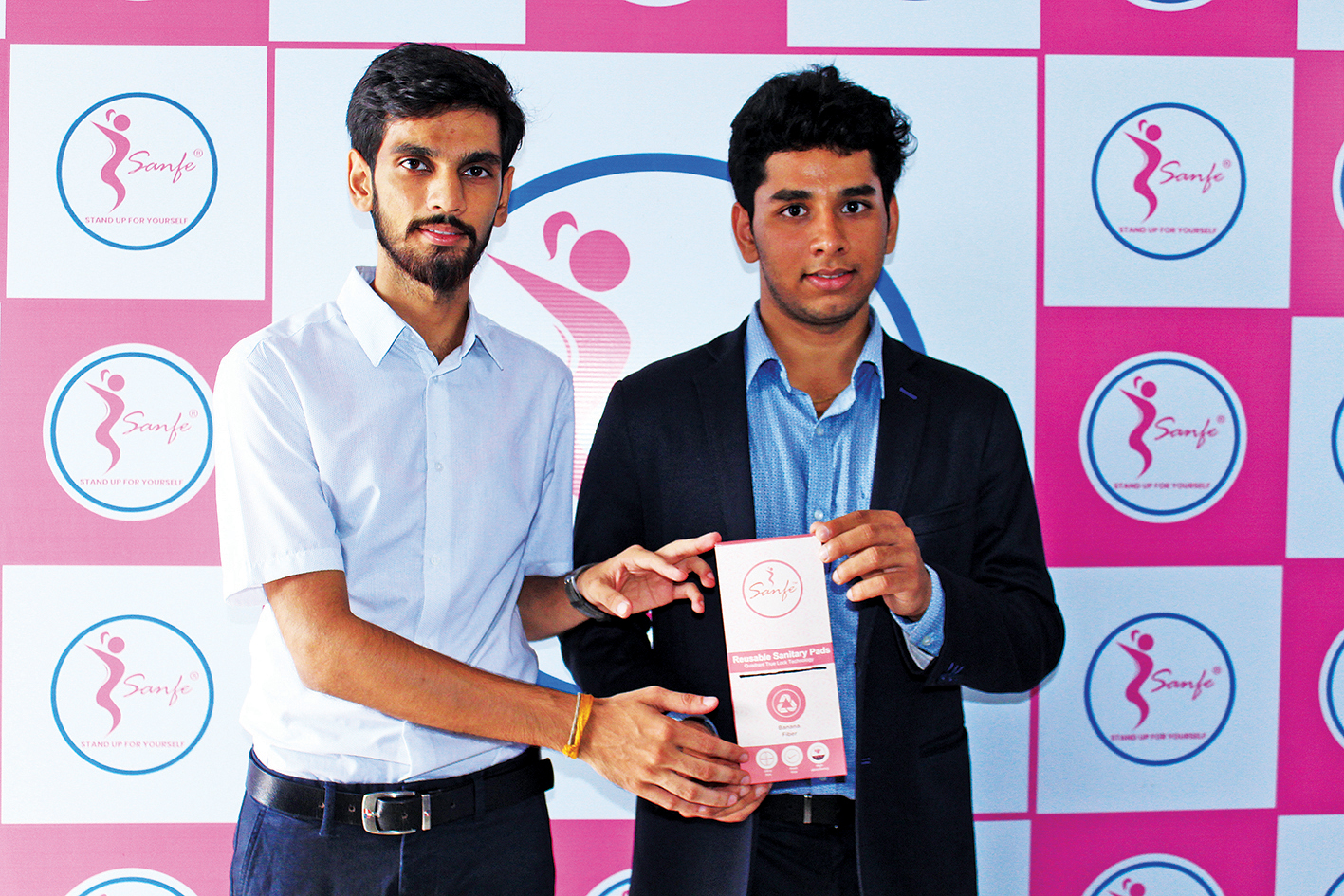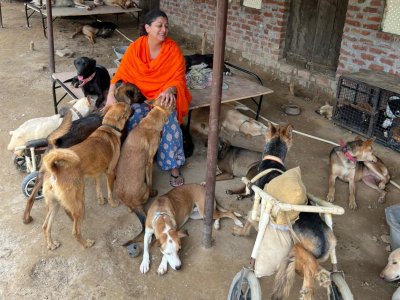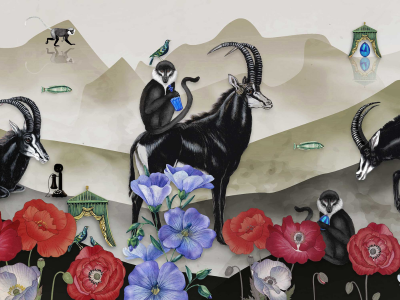While still studying engineering, two students of IIT Delhi have developed female hygiene products that include a reusable sanitary pad
It was the plight of a female friend contracting urinary tract infection due to lack of clean public washrooms on a trip to the mountains that led to the founding of Sanfe – a startup for designing and developing products for improving female health and hygiene. Two IIT Delhi BTech students Archit Agarwal (CEO) and Harry Sehrawat (COO) started the journey two years back.
The duo earlier developed two products that are available in the market, Sanfe Stand & Pee and Sanfe Period Pain Relief Roll-On. Now currently in their fourth year, they are back with a new product – reusable sanitary pads that can last up to two years (120 washes).
India has approximately 12.3 billion disposable sanitary napkins to be taken care of every year, and a majority of these are non-biodegradable. According to Menstrual Hygiene Alliance of India (MHAI), there are almost 336 million menstruating women in India, of whom 36% use disposable sanitary pads. In an attempt to address this huge problem of disposable pad waste, Sanfe has launched reusable sanitary pads made from banana fibre. Available online and soon to be taken to retail stores as well, a pack of two costs Rs 199.
Patriot catches up with Archit Agarwal, who talks about his journey, the setbacks they have faced and the need for awareness among the general public.
Could you share what prompted you to develop and create a reusable sanitary pad?

We are known as women empowerment entrepreneurs. We have been working on woman healthcare and hygiene for the past two years. Previously we came up with two more products that have been quite successful in the market. We interacted with a lot of women in the process, and during these interactions, we got to know the problems of disposal of plastic pads. A lot of plastic waste is created with each sanitary pad. We wondered why a sanitary pad cannot be re-used. And this question started our process.
How did you come up with this product? Could you elaborate on the process and how long did it take to finally launch it?
We started off from the very ideation process in December 2018. We identified what is the problem with the current sanitary pads and how to redesign it.
Both of us are pursuing textile engineering in IIT. Having this background, we had the core experience required for the development of the product and also had the technology in place. With that, we zeroed in on composite banana fibre made out of polyester and viscose.
There are quite a few reusable menstrual pads in the market already. What makes your product different from others?
The major difference is that it is made of banana fibre. Fifty percent of it is polyester and the other half is cotton. While the cotton is highly absorbent, the polyester fabric is highly wicking and doesn’t absorb the fluid, giving a dry experience throughout the time.
Menstrual cups are now considered the way forward. Why haven’t you worked with cups rather than creating a reusable pad?
We tried interacting with various rural groups and in the process, we figured out that the definition of virginity in India is quite different. The use of menstrual cups may lead to the breaking of the hymen. Adoption of menstrual cups is currently very slow in the country. We tried distributing cups among women but we received a lot of questions regarding its usage. We realised that bringing a change in behaviour among women would be very difficult.
Hence we thought of cloth pads which would be quite similar to the piece of cloth that they are already using. We wanted to bring a product that slightly modifies the one already being used so that the behavioural change required for the adoption of our product would be minimum.
Since you have come up with three products already, what kind of feedback have you received from your family and friends?
Initially, most of the people laughed at me, asking what am I doing with a product that only women use. But when we came up with the actual product, they were quite taken aback. People started using it more and more. Then we started focusing on the re-marketing to get women habituated with the products.
It has been two years now with your company Sanfe. What kind of setback have you faced over this period?
We have faced challenges in changing the mindset of people and to make women talk about menstrual issues. The difficulty we are facing now with the reusable pads is the sourcing of the banana fibre. We are based in Delhi and we are getting it sourced from Kerala and Maharashtra. The quality of the fibre also depends on the season and the state where we are getting it from.
Don’t you feel the issue lies more with awareness rather than the availability of products?
What I have seen is that people are willing to talk about menstrual issues but no one is taking the initiative to start the conversation.
We have launched two campaigns to raise awareness which also makes it easier for women to adopt the products. One of them was #StandUpFor – Yourself which got a very good response.
Now we are asking government bodies and NGOs who are distributing the pads in rural areas at subsidised rate, to switch to the reusable pads. Distributing disposable pads every month is not a sustainable model. The cost you would be incurring for 24 months with the disposable pads is much higher than what will be incurred with the reusable ones.





